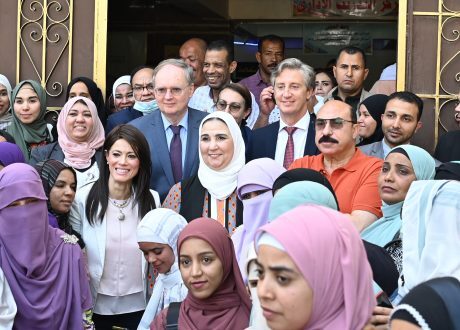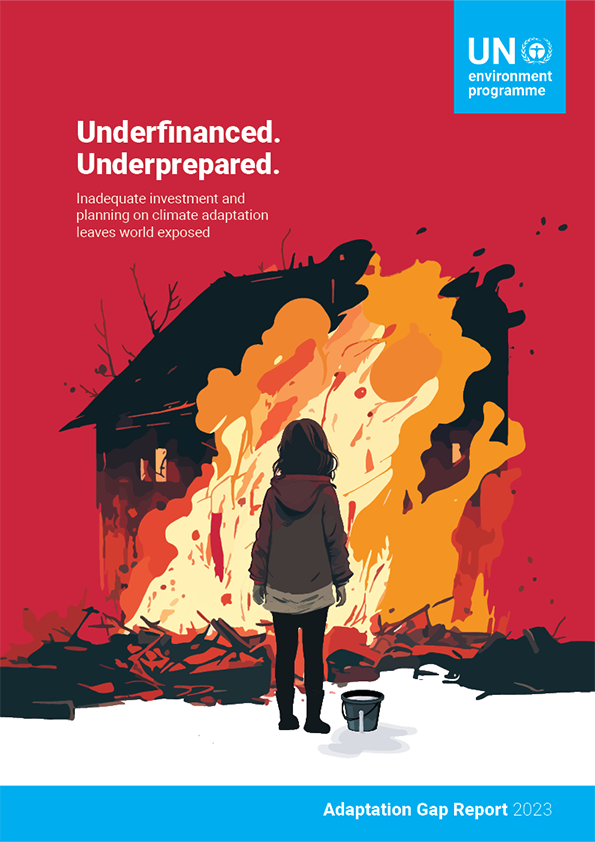
Egypt, UNDP, EU working together to promote sustainable development in Aswan
Egypt’s Ministry of Social Solidarity, the United Nations Development Program (UNDP) and the European Union ...

A new United Nations Environment Program (UNEP) report has identified seven ways to increase adaptation financing as the current adaptation finance gap is now estimated to be $194-366 billion per year with the adaptation finance needs of developing countries are 10-18 times as big as international public finance flows – over 50 percent higher than the previous range estimate.
Released ahead of the COP28 climate talks taking place in Dubai, United Arab Emirates, Adaptation Gap Report 2023: Underfinanced. Underprepared – Inadequate investment and planning on climate adaptation leaves world exposed said progress on climate adaptation is slowing on all fronts when it should be accelerating to catch up with rising climate change impacts and risks.
After a major update over previous years, the report now finds that the funds required for adaptation in developing countries are higher – estimated to be in a plausible central range of $215 billion to $387 billion per year this decade.
The modeled costs of adaptation in developing countries are estimated at $215 billion per year this decade and are projected to rise significantly by 2050. The adaptation finance needed to implement domestic adaptation priorities, based on extrapolation of costed Nationally Determined Contributions and National Adaptation Plans to all developing countries, is estimated at $387 billion per year.
Despite these needs, public multilateral and bilateral adaptation finance flows to developing countries declined by 15 percent to $21 billion in 2021. This dip comes despite pledges made at COP26 in Glasgow to deliver around $40 billion per year in adaptation finance support by 2025 and sets a worrying precedent.
While five out of six countries have at least one national adaptation planning instrument, progress to reach full global coverage is slowing. And the number of adaptation actions supported through international climate funds has stagnated for the past decade.
Studies indicate that every billion invested in adaptation against coastal flooding leads to a $14 billion reduction in economic damages. Meanwhile, $16 billion per year invested in agriculture would prevent approximately 78 million people from starving or chronic hunger because of climate impacts.
However, neither the goal of doubling 2019 international finance flows to developing countries by 2025 nor a possible New Collective Quantified Goal for 2030 will significantly close the adaptation finance gap on their own and deliver such benefits.
This report identifies seven ways to increasing financing, including through domestic expenditure and international and private sector finance. Additional avenues include remittances, increasing and tailoring finance to small and medium enterprises, implementation of Article 2.1(c) of the Paris Agreement on shifting finance flows towards low-carbon and climate resilient development pathways, and a reform of the global financial architecture, as proposed by the Bridgetown Initiative.
The new loss and damage fund will also be an important instrument to mobilize resources, but issues remain. The fund will need to move towards more innovative financing mechanisms to reach the necessary scale of investment.
“Today’s Adaptation Gap Report shows a growing divide between need and action when it comes to protecting people from climate extremes. Action to protect people and nature is more pressing than ever,” UN Secretary-General António Guterres said in his message on the report. “Lives and livelihoods are being lost and destroyed, with the vulnerable suffering the most.”
“We are in an adaptation emergency. We must act like it. And take steps to close the adaptation gap, now,” he added.
Egypt’s Ministry of Social Solidarity, the United Nations Development Program (UNDP) and the European Union ...
Saudi Arabia and the United Nations Environment Program (UNEP) have launched campaigns to combat desertification, ...
Cairo Festival City Mall (CFC), owned and operated by Al Futtaim Group, announced continued partnership ...


اترك تعليقا